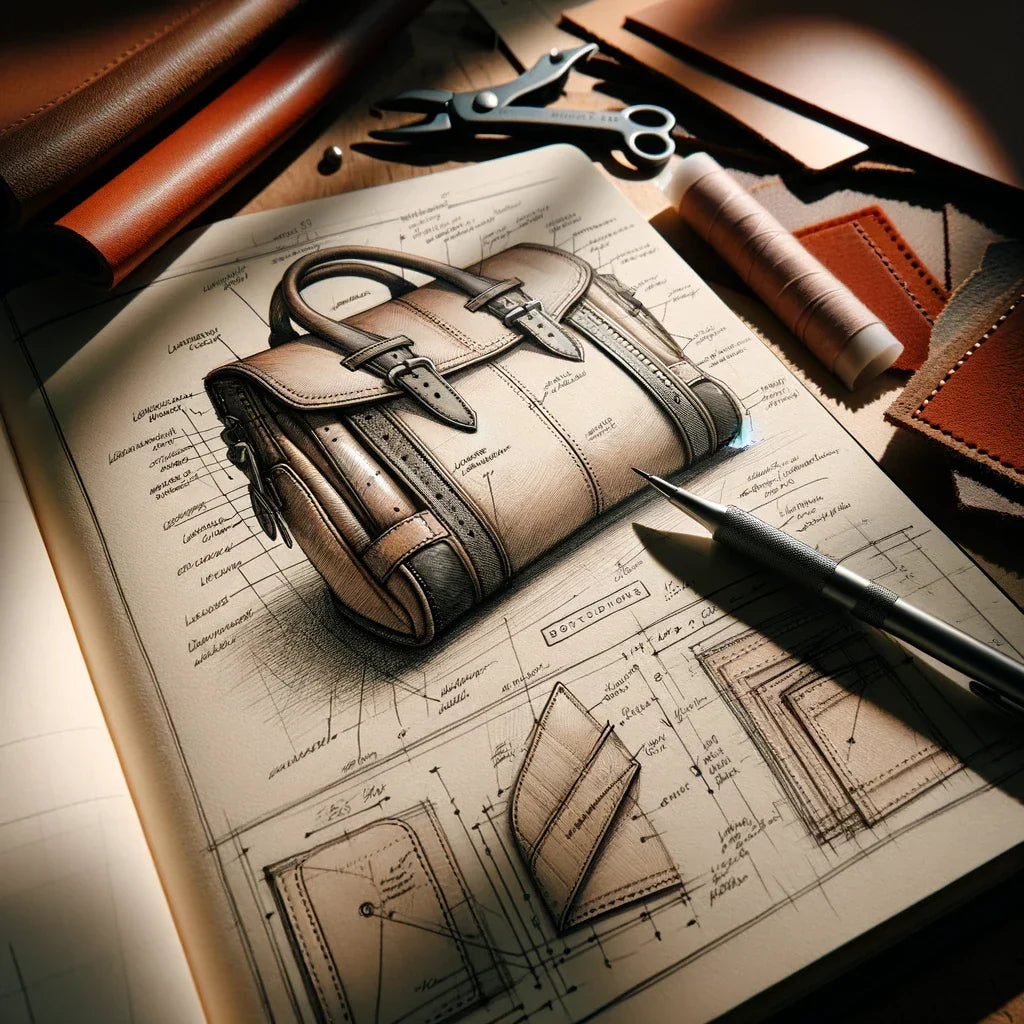
The Art of Leather Craftsmanship: An Inside Look at Handcrafting Premium Leather Goods
Share
Introduction
In a world increasingly dominated by mass-produced goods, the art of leather craftsmanship stands as a testament to the dedication, skill, and personal touch that define artisanal quality. For enthusiasts and connoisseurs alike, the allure of handcrafted leather goods lies not only in the finished product but in the intricate journey from raw material to exquisite accessory. This article takes you behind the scenes to explore the detailed process of creating premium leather goods, revealing why each piece is not just an item, but a story of craftsmanship.

The Selection of Premium Top Grain Leather
The journey of every artisanal leather product begins with the selection of high-quality materials. Top grain leathers from Japan and Italy are renowned for their superior quality, durability, and texture. These leathers are chosen for their minimal flaws and their ability to age beautifully. Before a single cut is made, artisans inspect the leather for thickness, grain consistency, and color to ensure that each piece meets the high standards required for luxury goods.

Designing: Blending Tradition with Innovation
Designing a leather product is both an art and a science. It involves sketching initial designs, selecting the right tools and materials, and considering the functional aspects of the product. Artisans blend traditional techniques with modern aesthetics to create designs that are both timeless and contemporary. This phase is crucial as it sets the foundation for crafting a piece that is not just functional but also stylish and unique.
Cutting and Preparing the Leather
Once the design is finalized, the leather is carefully cut into shapes. This process requires precision and expertise to ensure that each piece is perfectly aligned with the grain of the leather, which affects the feel and durability of the final product. Edges are then thinned, and any necessary hardware is prepared for assembly. This stage is methodical and demands attention to detail, as any errors in cutting can alter the fit and appearance of the product.

Assembly: The Heart of Craftsmanship
The assembly process is where the true art of leather craftsmanship shines. Each piece of leather is stitched together using techniques that have been refined over generations. Stitching is not just about connecting pieces; it's about reinforcing the structure, defining the shape, and enhancing the design. Artisans use a variety of stitching techniques, including saddle stitching by hand, which is renowned for its strength and aesthetic appeal.
Finishing Touches: Quality and Aesthetics
The final stage of leather crafting involves finishing touches such as burnishing, polishing, and conditioning the leather. Burnishing the edges seals them and gives a smooth, refined look, while polishing enhances the leather’s natural patina. Conditioning is crucial for maintaining the leather’s suppleness and ensuring that it ages gracefully. Each of these steps is performed with meticulous care to guarantee that the finished product is not only beautiful but also durable.
Quality Control and Final Review
Before any leather product is deemed ready for the market, it undergoes rigorous quality control checks. This ensures that every item adheres to the high standards expected by both the artisans themselves and their discerning clientele. Products are inspected for any imperfections, and functionality tests are conducted to ensure they perform as intended, guaranteeing customer satisfaction.

The Personal Touch: Custom Orders and Client Relationships
Beyond the production of regular catalogue items, many leather artisans offer custom-made services. This section allows clients to have a direct hand in creating a product that meets their specific desires, whether it's choosing the leather color, stitch style, or additional personalization options like monograms. This process not only enhances customer satisfaction but also reinforces the personal connection between the artisan and the product.
Conclusion
The art of leather craftsmanship is a dialogue between artisan and material, a balance of strength and beauty, and a commitment to quality that stands the test of time. Each handcrafted leather good holds within it the story of its making—embodied in every stitch, every cut, and every polish. For those who seek more than just a product, these pieces are a testament to the enduring appeal of handcrafted goods. In an age of the ubiquitous, the unique charm of artisanal leather goods invites us to appreciate the human touch in every detail.

